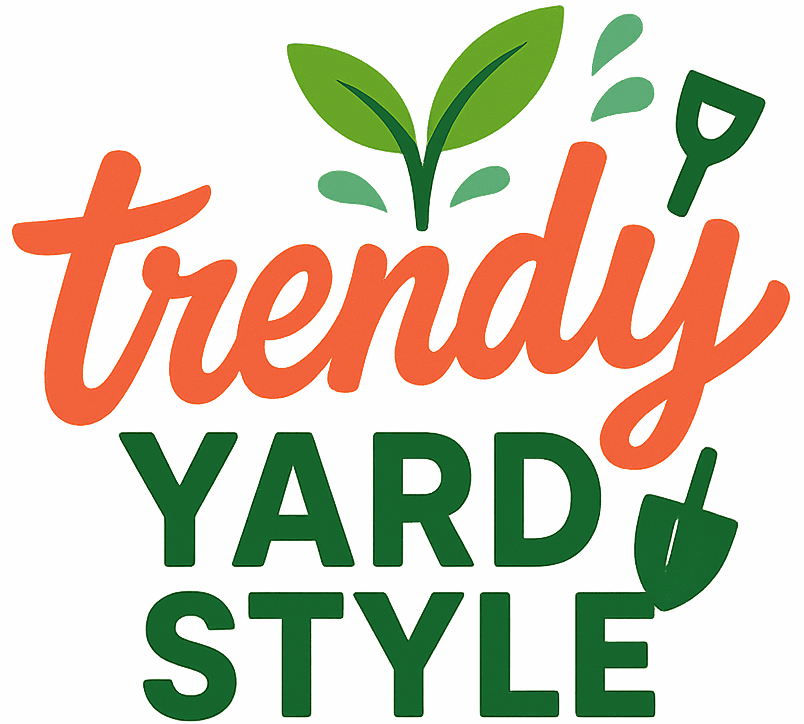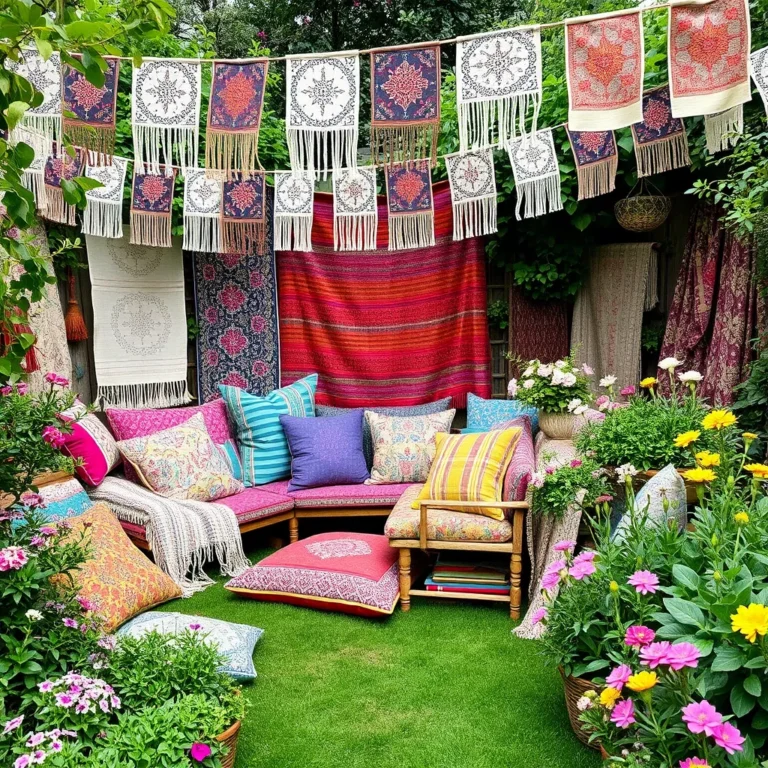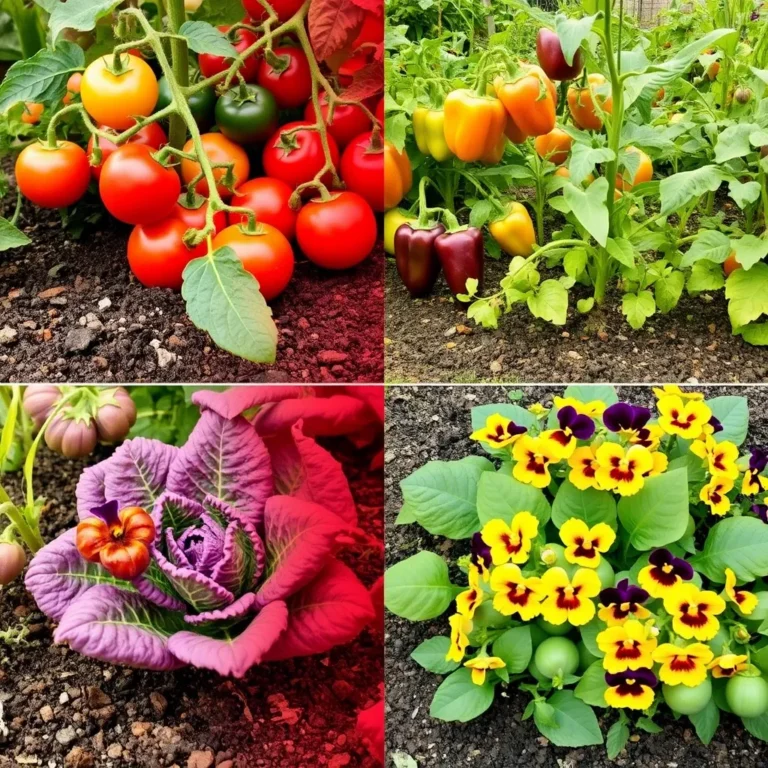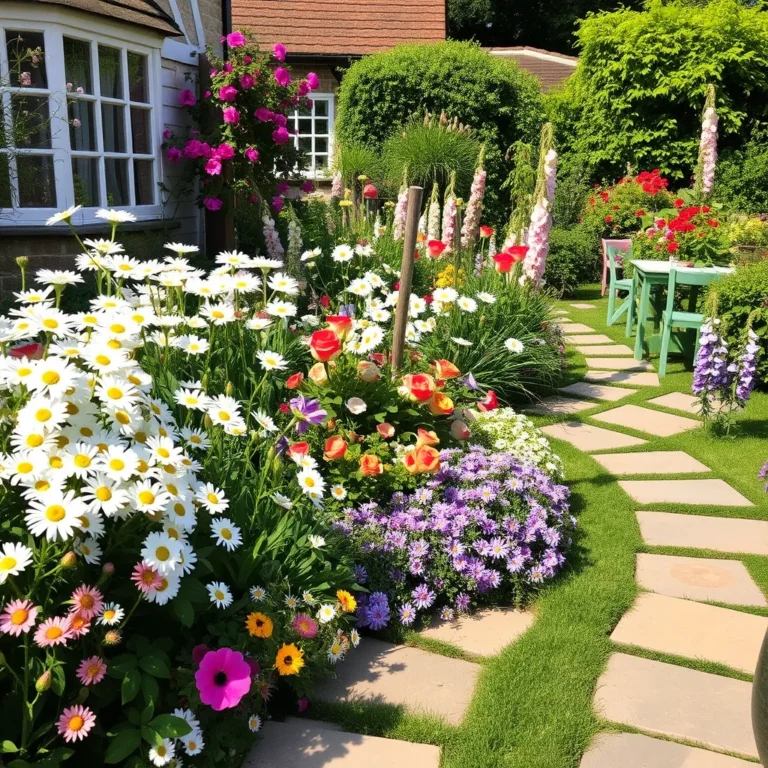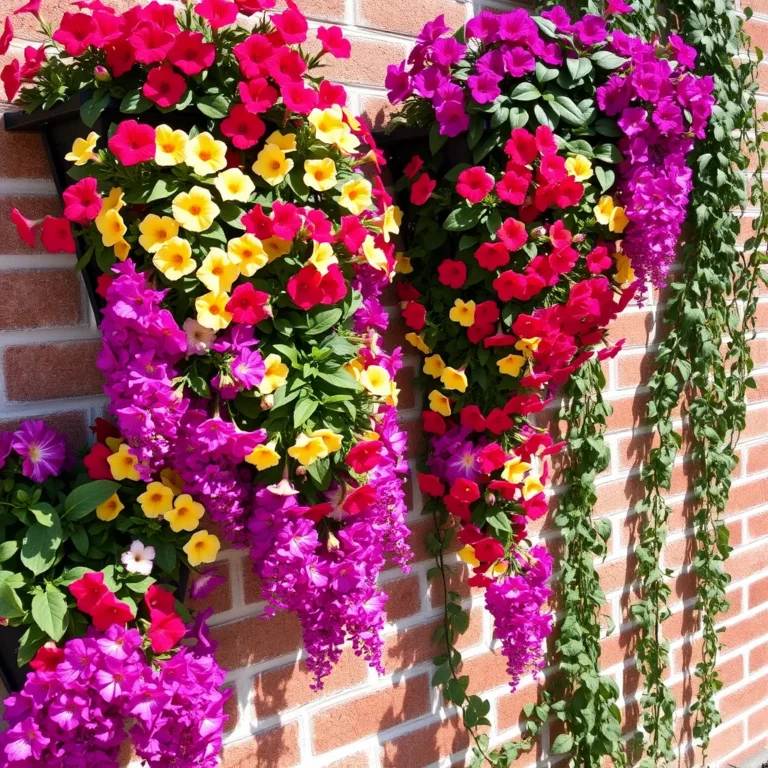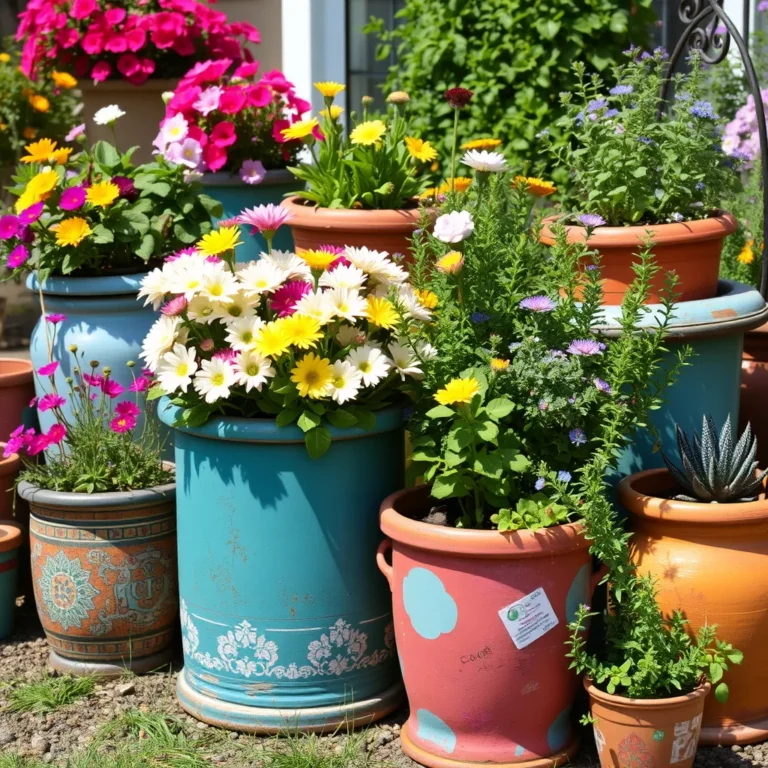7 Stunning Flower Bed Ideas to Elevate Curb Appeal
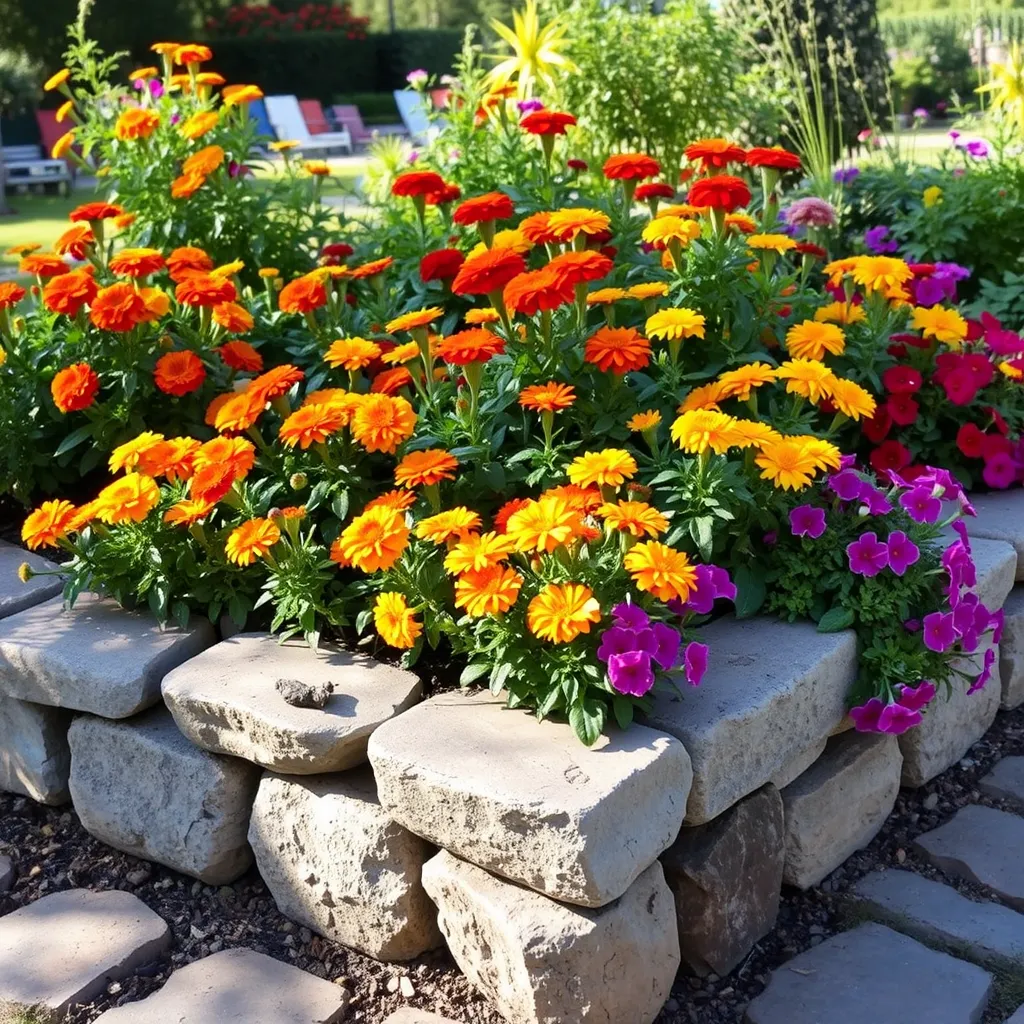
Want to boost your home’s curb appeal? Elevating your outdoor space can be simple and fun! I’ll share seven stunning flower bed ideas that will transform any yard. From raised beds to edible gardens, there’s something for everyone. Let’s dive into creative designs and practical tips to make your flowers shine all year long. Ready to make your neighbors envious? Let’s get started!
Raised Flower Beds: Advantages and Design Tips

Raised flower beds bring beauty and function to your yard. They make gardening easier. You can plant flowers at a higher level, which saves your back. Plus, they improve drainage. This helps flowers grow strong.
When you build a raised bed, use sturdy wood, stone, or brick. Make sure it is at least 12 inches deep. This gives roots space to spread. You can also choose a shape that fits your yard. Rectangles and circles are popular choices.
Fill your raised bed with good soil. Mix compost with garden soil. This mix gives plants the nutrients they need. Plant flowers that match your sun and shade areas. Some great flowers for raised beds include marigolds and petunias.
Add a border around your raised bed. This keeps mulch in place and adds style. You can use stones, bricks, or even low plants. This makes your flower bed stand out.
Perennial Gardens: Choosing Long-lasting Blooms for Year-round Appeal

Perennial gardens are a smart choice for lasting beauty. Perennials come back every year, so you save time and money. They bloom in different seasons. This means you can enjoy flowers for longer.
When choosing perennials, think about your climate. Some popular options are coneflowers and daylilies. These flowers thrive in many areas. Group similar plants together for a full, lush look.
Mix heights in your garden for visual interest. Place taller plants in the back and shorter ones in the front. This makes your flower bed eye-catching. Add some ground cover to fill gaps and reduce weeds.
Plan your planting for different seasons. For spring, consider tulips and daffodils. In summer, add black-eyed Susans. For fall, asters and sedums are great choices. You’ll have blooms from spring to fall.
Color-coordinated Flower Beds: Strategies for Harmonizing Blooms

Color-coordinated flower beds make your yard pop. Start by choosing a color scheme. You can go for warm colors like reds and yellows or cool colors like blues and purples.
Pick flowers that match your theme. Use a mix of shapes and sizes. This adds depth and makes your garden unique. Place bold colors at the back and softer shades in front.
Consider the seasons when choosing colors. Some flowers bloom early, while others bloom late. This way, you keep a fresh look all year.
Use plants with different leaf colors too. Green, purple, and variegated leaves add more interest. Make sure to leave space for growth to avoid a crowded look.
To keep the color scheme neat, add mulch. It helps with moisture and keeps weeds away. Plus, it adds a finished look to your flower bed.
Edible Flower Beds: Combining Aesthetics and Practicality

Edible flower beds look great and taste good. You can plant flowers like nasturtiums and pansies. They add color and can spice up your salad.
Choose a sunny spot in your yard. Make sure you have good soil. Mix in compost or other organic matter. This helps your flowers grow strong.
Plan your layout. Use taller plants in the back and shorter ones in front. This gives depth and makes each flower shine.
Consider using herbs too. Basil and chives look nice and are useful in the kitchen. You’ll be happy to pick fresh herbs for dinner.
Water your flower bed regularly. Keep the soil moist but not soggy. This helps your plants thrive.
Themed Flower Beds: Creating a Seasonal Look for Curb Appeal

Themed flower beds can make your yard stand out. You can create a spring garden with tulips and daffodils. In summer, switch to sunflowers and zinnias for bright colors.
Choose a theme that matches your style. A butterfly garden uses flowers like milkweed and coneflowers. This attracts beautiful butterflies and helps pollinators.
Time your planting well. Each season has its best blooms. Check local planting guides for tips.
Use decorations to enhance your theme. Add garden art or decorative stones. This gives your flower bed a unique touch.
Keep your theme fresh yearly. Change the flowers or decorations to keep things interesting. Your neighbors will be impressed.
Container Flower Beds: Space-saving Ideas for Urban Dwellings

Container flower beds are perfect for small spaces. You can place them on patios or balconies. They’re easy to manage and can fit any style.
Start with good pots. Choose ones with drainage holes to keep roots healthy. You can use ceramic, plastic, or even wooden containers.
Select plants that grow well together. Mix flowers like petunias with herbs or small vegetables. This makes your space both pretty and useful.
Group pots together for a fuller look. Place taller plants in the back and shorter in front. This creates a layered effect.
Remember to water your containers often. They dry out faster than garden beds. Add slow-release fertilizer for healthy growth.
These ideas will help you create stunning flower beds. Your curb appeal will surely rise!
Mixing Flowers and Foliage: Texture and Height Variations

Mixing flowers and foliage adds depth to your flower beds. You can create a lively look by using plants of different heights. For example, tall flowers like sunflowers can stand proud. Pair them with shorter plants like marigolds. This mix makes your bed exciting to view.
You can also use various leaf shapes. Try broad leaves next to fine, delicate ones. This contrast makes the bed more interesting. Think about colors too. Dark green leaves can highlight bright blooms. Using a mix of colors and textures makes your garden pop.
Incorporating Native Plants: Benefits for Local Ecosystems and Low Maintenance

Native plants are great for any flower bed. They grow well in your area. They need less water and care. This means you can have a beautiful garden without much work. Plus, they help local wildlife. Birds, bees, and butterflies love them!
Using native plants can also save you money. They adapt to your soil and climate. You won’t need to buy extra soil or fertilizer. This keeps your garden healthy and thriving.
Seasonal Blooms: Planning for Continuous Color Throughout the Year

To keep your flower bed colorful, plan for seasonal blooms. Choose flowers that bloom at different times. For spring, plant tulips and daffodils. In summer, add zinnias and dahlias. Fall can bring asters and chrysanthemums. This way, your garden always has color.
You can also mix early and late bloomers. This keeps your space lively. Be sure to check local planting guides. They can help you choose the best flowers for your area. A well-planned bed brings joy all year long.
Maintenance Tips: How to Keep Your Flower Beds Thriving

To keep your flower beds healthy, water them deeply once a week. Flowers need moisture but avoid overwatering. Use mulch to help retain soil moisture and keep weeds away. I always choose organic mulch, like wood chips or straw.
Next, check for pests regularly. Look under leaves and around stems for any bugs. If you see pests, remove them by hand or use insect soap. This keeps your flowers safe and strong.
Prune dead or wilted blooms. This helps the plant focus on new growth and stays neat. Use sharp scissors for clean cuts. Regular deadheading can boost your flowers’ bloom time.
Fertilize your flower beds with a balanced fertilizer. This gives your plants nutrients. I usually apply it in spring and early fall. Follow the directions on the package for the best results.
Lastly, plan for seasonal changes. Some plants need more care in fall or winter. Be ready to cover them or move pots inside. This way, your flower beds stay beautiful all year.
Budget-friendly Flower Bed Ideas: Affordable Plants and Solutions

You can create stunning flower beds without spending a lot. Start with native plants. They grow well in your area and need less water and care. Look for local garden centers for affordable options.
Another great choice is perennials. These plants come back each year, saving you money. Some popular ones are daylilies, coneflowers, and black-eyed Susans. They bloom for long times and attract bees and butterflies.
Consider seeds instead of plants. Buying seeds is often cheaper. Start them indoors or sow them directly in your garden. You’ll save money and enjoy the fun of watching them grow.
Use recycled materials for borders and decorations. Old bricks, wood, or stones add charm and keep costs down. You can find these items at yard sales or in your garage.
Lastly, join community groups. People often share plants and seeds. This can help you fill your beds without spending much. Plus, you can make new friends who love gardening too!
Resources for Flower Bed Inspiration: Books, Websites, and Social Media

Finding inspiration for flower beds is easy. Start with books from your local library. Look for titles on gardening and landscaping. They often have great tips and beautiful photos.
Websites are another great resource. Sites like Pinterest and Houzz show many flower bed ideas. You can save your favorite designs for later. You might even find local garden blogs with tips for your area.
Social media platforms are also helpful. Follow gardening accounts on Instagram and Facebook. They share stunning images and helpful advice. You can connect with other garden lovers and share your progress.
YouTube is perfect for visual learners. Watch videos on flower bed design and care. Many gardeners share their tips and tricks. This can help you understand what works best for your space.
Lastly, consider visiting local gardens. Many communities have public gardens you can explore. Walking through them can spark new ideas for your own flower beds. Plus, you can see what plants thrive in your area.
Conclusion
Raised flower beds offer many benefits. They save space and make gardening easier. Choosing perennials can give you blooms all year. Color-coordinated flower beds create a pleasing look. Edible flowers mix beauty with usefulness. Themed flower beds add unique charm to your garden. Container beds are great for small areas. Mixing flowers and foliage adds depth. Native plants support local wildlife and need less care. Planning for seasonal blooms keeps your garden colorful. Regular maintenance helps your garden thrive. Budget-friendly ideas make gardening accessible. Use resources to spark your creativity. Enjoy your beautiful and vibrant garden.
